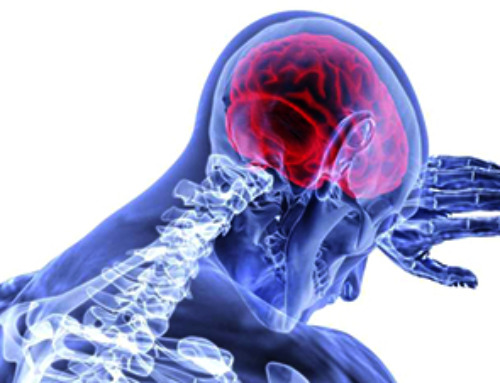In a paper published in the journal Biomacromolecules, a flexible and effective two-step method centered on triazine and azide-alkyne click-chemistry was devised for fluorescent labeling of nanoscale cellulose for use in microscopy applications.
The Vast Potential of Cellulose Nanomaterials
Cellulose, a major constituent of the cell wall in plants, is the most abundantly available structured biopolymer on the planet and is used extensively in the architecture, fabric, and paper industry. Crystalline cellulose nanoparticles generated from biomass, such as cellulose nanocrystals (CNCs) and cellulose nanofibrils (CNFs), have excellent thermal stability, tensile strength, and specific area.
Due to their unique features, sustainable nanoscale celluloses are already being employed in fields such as tissue engineering, nanomedicine, biosensors, biodegradable polymers, power storage, and water treatment.
Visualizing Nanocellulose Networks via Fluorescence Microscopy
The visualization of nanocellulose dispersion and dynamics within complicated frameworks is often required to use nanocelluloses in real world settings. If the nanocelluloses are luminous, fluorescent microscopy procedures may be used to visualize nanofibers and nanoparticles inside three-dimensional networks due to their sensitivity and selectivity.
According to a previous study, whenever fluorescent CNCs are utilized as medicine carriers, their absorption by macrophages and embryo cells can be tracked, and their biological distribution throughout tissues may be observed. The confocal microscopic technique has been used to study the dispersion of CNCs and their engagement with other elements in emerging bio-composites such as structural CNC polymeric hydrogels and CNC-protein-polymer frameworks.
Fluorescent cellulose has also been utilized to investigate the effects of pretreatment on the morphology, availability, and enzyme-triggered depolymerization of cellulose at high resolutions, hence helping to formulate effective biomass converting techniques.
However, modern scanning techniques such as multiphoton, light-sheet, and super-resolution imaging are seldom used in cellulose research. This is attributable, in part, to a lack of easy, quick, and inexpensive ways for fluorescent labeling of nanocelluloses without affecting their distinctive features.
Challenges Associated with Fluorescence Imaging of Nanocellulose
The difficulty of identifying cellulose in its original state stems from its chemically inert and insoluble nature. Cellulose is composed of linear β−1→4 anhydroglucose polymer (glucan) groups that form into densely packaged crystalline fibrils, showing insolubility in water due to an extensive hydrogen-bonding web.
According to documented fluorescent labeling techniques, the moderately responsive hydroxyl groups on the surface of cellulose are often derivatized with maleimide, amine, or N-hydroxysuccinimide groups which are responsive with supplementary moieties on commercially accessible pigments, and the tagging is carried out as a non-homogenous response.
Since most of these approaches rely on natural solvent swaps, which may promote nanocellulose agglomeration, triazinyl- and hydrazine-substituted fluorophores have been employed to generate aqueous single-step tagging procedures. Dichlorotriazinyl amino-fluorescein (DTAF), a widely accessible fluorophore that has been utilized to tag CNCs, CNFs, and bacterial cellulose (BC), is the most commonly employed pigment in these processes.
This labeling method is inefficient since it competes for hydrolysis processes in aqueous conditions, requiring a considerable surplus of DTAF to obtain significant labeling concentrations. The poor labeling effectiveness of DTAF, combined with its inadequate photostability, has also hampered its usage in high-resolution fluorescent microscopy.
Highlights of the Study
In this study, the researchers developed effective labeling techniques based on triazine linkers, allowing them to perform high-resolution fluorescent imaging on a range of nanocellulose materials. Initially, the fabrication of a novel triazine-based pigment, dichlorotriaznyl piperazine rhodamine (DTPR) was described, allowing cellulose to be labeled with a high-performing fluorophore in a single step.
A two-step triazine- and click-chemistry process was then used to label nanocellulose, avoiding complicated fabrication and lowering tagging costs. The second phase, specifically, required an effective click-reaction which could be done with any commonly obtainable pigment having azide activity. This enabled the employment of a diverse set of fluorophores in cellulose research.
Thanks to the capability of labeling cellulosic materials to varying extents while maintaining the original features of nanocellulose, this approach may be used to tag cellulose for a variety of fluorescence-based investigations and scanning purposes.
The versatility provided by triazine chemistry may also be employed to build bifunctional linkers that enable pigment labeling of nanocellulose for visualizing needs while also introducing a second activity that may be utilized for binding, cross-linkage, or sensing.
The approaches presented should give labeling avenues for visualizing cellulose nanoparticles, which are employed in a wide array of applications.
News
Vision can be rebooted in adults with amblyopia, study suggests
Temporarily anesthetizing the retina briefly reverts the activity of the visual system to that observed in early development and enables growth of responses to the amblyopic eye, new research shows. In the common vision [...]
Ultrasound-activated Nanoparticles Kill Liver Cancer and Activate Immune System
A new ultrasound-guided nanotherapy wipes out liver tumors while training the immune system to keep them from coming back. The study, published in Nano Today, introduces a biodegradable nanoparticle system that combines sonodynamic therapy and cell [...]
Magnetic nanoparticles that successfully navigate complex blood vessels may be ready for clinical trials
Every year, 12 million people worldwide suffer a stroke; many die or are permanently impaired. Currently, drugs are administered to dissolve the thrombus that blocks the blood vessel. These drugs spread throughout the entire [...]
Reviving Exhausted T Cells Sparks Powerful Cancer Tumor Elimination
Scientists have discovered how tumors secretly drain the energy from T cells—the immune system’s main cancer fighters—and how blocking that process can bring them back to life. The team found that cancer cells use [...]
Very low LDL-cholesterol correlates to fewer heart problems after stroke
Brigham and Women's Hospital's TIMI Study Group reports that in patients with prior ischemic stroke, very low achieved LDL-cholesterol correlated with fewer major adverse cardiovascular events and fewer recurrent strokes, without an apparent increase [...]
“Great Unified Microscope” Reveals Hidden Micro and Nano Worlds Inside Living Cells
University of Tokyo researchers have created a powerful new microscope that captures both forward- and back-scattered light at once, letting scientists see everything from large cell structures to tiny nanoscale particles in a single shot. Researchers [...]
Breakthrough Alzheimer’s Drug Has a Hidden Problem
Researchers in Japan found that although the Alzheimer’s drug lecanemab successfully removes amyloid plaques from the brain, it does not restore the brain’s waste-clearing system within the first few months of treatment. The study suggests that [...]
Concerning New Research Reveals Colon Cancer Is Skyrocketing in Adults Under 50
Colorectal cancer is striking younger adults at alarming rates, driven by lifestyle and genetic factors. Colorectal cancer (CRC) develops when abnormal cells grow uncontrollably in the colon or rectum, forming tumors that can eventually [...]
Scientists Discover a Natural, Non-Addictive Way To Block Pain That Could Replace Opioids
Scientists have discovered that the body can naturally dull pain through its own localized “benzodiazepine-like” peptides. A groundbreaking study led by a University of Leeds scientist has unveiled new insights into how the body manages pain, [...]
GLP-1 Drugs Like Ozempic Work, but New Research Reveals a Major Catch
Three new Cochrane reviews find evidence that GLP-1 drugs lead to clinically meaningful weight loss, though industry-funded studies raise concerns. Three new reviews from Cochrane have found that GLP-1 medications can lead to significant [...]
How a Palm-Sized Laser Could Change Medicine and Manufacturing
Researchers have developed an innovative and versatile system designed for a new generation of short-pulse lasers. Lasers that produce extremely short bursts of light are known for their remarkable precision, making them indispensable tools [...]
New nanoparticles stimulate the immune system to attack ovarian tumors
Cancer immunotherapy, which uses drugs that stimulate the body’s immune cells to attack tumors, is a promising approach to treating many types of cancer. However, it doesn’t work well for some tumors, including ovarian [...]
New Drug Kills Cancer 20,000x More Effectively With No Detectable Side Effects
By restructuring a common chemotherapy drug, scientists increased its potency by 20,000 times. In a significant step forward for cancer therapy, researchers at Northwestern University have redesigned the molecular structure of a well-known chemotherapy drug, greatly [...]
Lipid nanoparticles discovered that can deliver mRNA directly into heart muscle cells
Cardiovascular disease continues to be the leading cause of death worldwide. But advances in heart-failure therapeutics have stalled, largely due to the difficulty of delivering treatments at the cellular level. Now, a UC Berkeley-led [...]
The basic mechanisms of visual attention emerged over 500 million years ago, study suggests
The brain does not need its sophisticated cortex to interpret the visual world. A new study published in PLOS Biology demonstrates that a much older structure, the superior colliculus, contains the necessary circuitry to perform the [...]
AI Is Overheating. This New Technology Could Be the Fix
Engineers have developed a passive evaporative cooling membrane that dramatically improves heat removal for electronics and data centers Engineers at the University of California San Diego have created an innovative cooling system designed to greatly enhance [...]





















